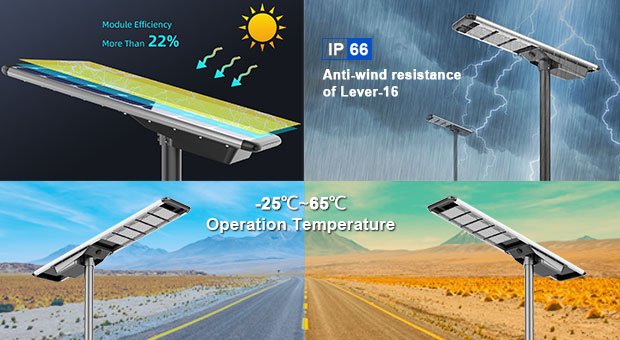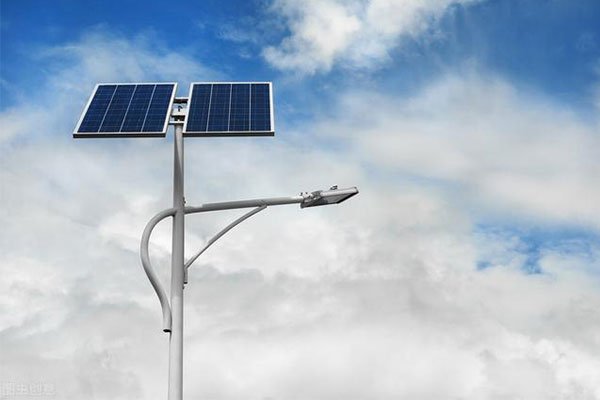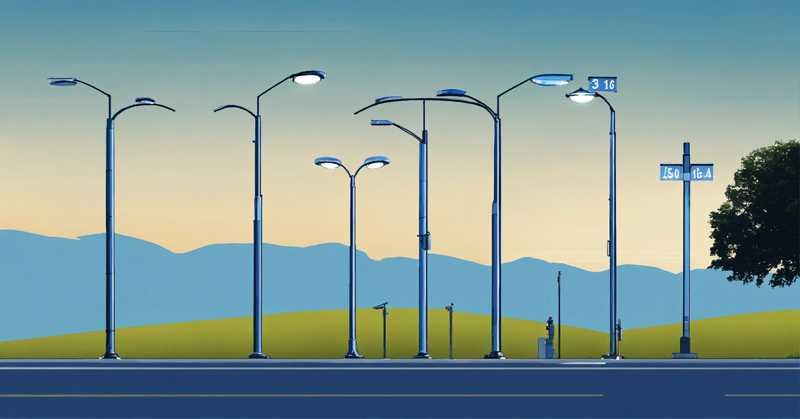Choosing the optimal height for solar street lights is crucial for maximizing illumination, energy efficiency, and durability. The right height ensures adequate coverage, prevents glare, and enhances safety in various outdoor settings.
Understanding how solar street lights function and their benefits can help decision-makers choose the best height for their specific needs.
Are Solar Street Lights a Good Choice?
Solar street lights are one of the most energy-efficient and sustainable outdoor lighting solutions. Here’s why:
1.1 Energy Efficiency & Cost Savings
- Solar street lights harness renewable solar energy, eliminating electricity costs.
- While the initial investment is higher, long-term savings come from low maintenance costs and zero electricity bills.
1.2 Independence & Reliability
- Off-grid operation: Solar street lights work independently of electrical grids, ensuring continuous operation even during power outages.
- Ideal for remote locations: Perfect for rural areas, parks, and streets where traditional power infrastructure is expensive to install.
1.3 Environmental Benefits
- Zero carbon emissions: Reduces reliance on fossil fuels.
- No light pollution: Smart dimming features prevent excessive brightness, protecting the night sky.
1.4 Smart Technology Integration
- Motion sensors help conserve energy.
- Remote monitoring allows automatic brightness adjustments and efficiency tracking.
How Do Solar Street Lights Work?
Solar street lights function using an integrated solar power system that operates in the following way:
2.1 Solar Panel Absorption
- Photovoltaic (PV) panels absorb sunlight and convert it into direct current (DC) electricity.
2.2 Battery Storage
- Energy generated during the day is stored in rechargeable batteries to power the light at night.
2.3 LED Light Fixture
- Energy-efficient LEDs provide high-intensity illumination while consuming minimal power.
2.4 Controller for Smart Operation
- The controller regulates battery charge and power distribution to ensure peak efficiency.
- Dimming and motion sensor features optimize energy use.
2.5 How It Works at Night
- Daytime: Solar panels collect sunlight and charge the battery.
- Sunset: The controller automatically turns on the LED light.
- Night operation: The battery supplies stored power to keep the LED shining.
- Sunrise: The controller shuts off the LED light and starts recharging the battery.
How High Should Solar Street Lights Be?
The height of a solar street light depends on its application and the area coverage required.
Recommended Heights by Application
| Application | Ideal Pole Height |
|---|---|
| Pathways & Gardens | 10-15 feet (3-4.5 meters) |
| Residential Streets & Parking Lots | 15-25 feet (4.5-7.5 meters) |
| Main Roads & Highways | 25-35 feet (7.5-10.5 meters) |
✅ Higher poles provide a wider light spread but require more powerful solar panels and batteries.
Solar vs. Conventional Street Lights: Which is Better?
| Feature | Solar Street Lights | Conventional Street Lights |
|---|---|---|
| Energy Source | Solar power (free energy) | Grid electricity (ongoing cost) |
| Installation Cost | Higher initial cost, no trenching needed | Lower upfront cost, but expensive grid wiring |
| Operating Cost | Zero electricity bills | Continuous energy costs |
| Maintenance | Low – occasional battery replacement | High – regular bulb replacement and wiring maintenance |
| Environmental Impact | Carbon-free, sustainable | Carbon emissions, reliance on fossil fuels |
| Power Outage Reliability | Operates independently of grid | Fails during power outages |
✅ Best For: Solar street lights are ideal for cost-conscious, eco-friendly, and off-grid applications.
How to Choose the Best Solar Street Light
6.1 Assess Your Lighting Needs
- Determine brightness levels (lumens) and coverage area.
- Choose the appropriate pole height for your application.
6.2 Battery & Solar Panel Efficiency
- Opt for high-capacity batteries to store energy for cloudy days.
- Choose monocrystalline solar panels for maximum efficiency.
6.3 Durability & Weather Resistance
- Waterproof (IP65+) and rust-resistant materials for outdoor durability.
- Wind-resistant poles for high-wind regions.
6.4 Smart Features for Efficiency
- Motion sensors & dimming options optimize energy use.
- Remote monitoring allows better maintenance planning.
Do Solar Street Lights Work on Rainy or Cloudy Days?
Yes! Solar panels still generate electricity on cloudy days by capturing diffused sunlight. However:
- Charging efficiency is lower, so battery storage becomes crucial.
- Lithium-ion or LiFePO₄ batteries can store enough power for multiple days of operation.
Conclusion: Making the Smart Choice
- Solar street lights are cost-effective, sustainable, and reliable for outdoor lighting.
- They offer zero electricity costs, minimal maintenance, and independent operation.
- Choosing the right height, battery capacity, and solar panel efficiency ensures optimal performance.







